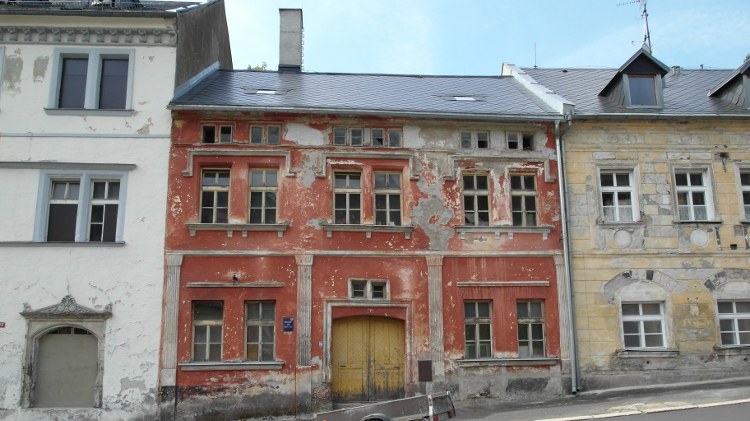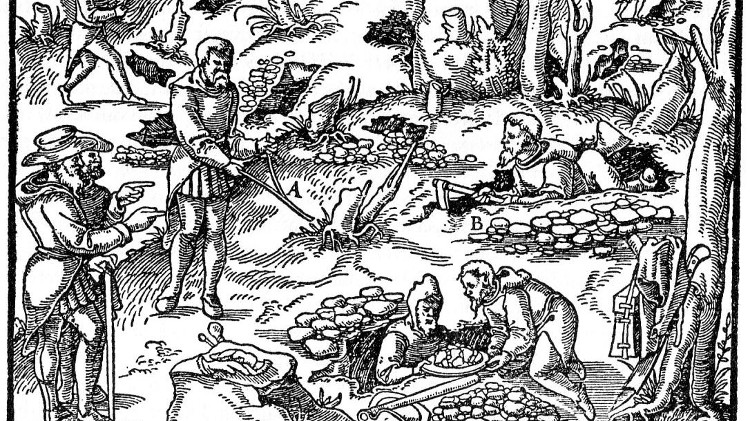Royal Engineer tunnellers using a water pressure drill to clear solid rock inside the Rock of Gibraltar in November 1941. W.G. Dallison (Lieut), British War Office official photographer/Wikimedia
This was one of our favourite stories of the year. To see the full list, check out our Editors' Picks of 2018.
The Rock of Gibraltar, located on the British territory of Gibraltar near the southwestern tip of Europe, is honeycombed with more than 50 kilometres of tunnels dug over the course of 200 years as a British fortress. While some passages date from the 18th century, the most intensive phase of tunnelling occurred during the Second World War and was the handiwork of Canadian hard rock miners.
The Rock was strategically crucial for the Allies because of its position at the mouth of the Mediterranean, giving them the ability to control naval traffic to and from the Atlantic. Strong defences were therefore needed to protect the British stronghold from relentless bombing from above and from potential invasion on all sides, with the Italians to the east, the Germans on the Spanish border and Morocco to the south, which came under Vichy French control when France surrendered to Germany in June 1940.
Two military units of British miners were dispatched to the Rock in 1940 to start digging labyrinthine fortifications into the Gibraltar limestone. But hard rock mining was a rarity in Britain and few had the expertise needed to dig the rock. On Oct. 23, Viscount Cranborne, the secretary of state for dominion affairs, asked the Canadian high commissioner Vincent Massey if the No. 1 Canadian Tunnelling Company could be dispatched to Gibraltar “as a matter of urgency.” Four officers and 100 men – trained hard rock miners from Ontario and Quebec already stationed in the U.K. – arrived in Gibraltar in November 1940.
It quickly became apparent that the Canadian miners’ skills were far superior to their British counterparts’. An army diary entry from October 1941 notes the Canadian tunnellers had not yet had a blasting accident, while multiple British tunnellers had died in accidents.
Related: During the critical battles of World War One, skilled miners – many of them Canadian – made Allied victories possible
The British War Office therefore soon requested that more Canadian miners join the effort at Gibraltar. Canada’s defence minister James Layton Rolston agreed, boasting that he was “convinced of […] the special competence of our personnel not only to do the work but to train British units in these hard rock operations. I think it is a distinctly Canadian contribution with importance much beyond the number of men and military equipment employed.” The No. 2 Tunnelling Company disembarked on the Rock in March 1941.
Together, the No. 1 and No. 2 Tunnelling Companies carried out several major mining projects. Their main task involved excavating a series of wards and tunnels in a large subterranean hospital. It would later house 200 beds, a laundry, an operating theatre and flush toilets. They also built pillboxes, ammunition magazines, and oil storage tanks, and fortified and expanded the Rock’s sprawling web of underground passages.
The central bomb-proof tunnel ran for a mile and was named the Great North Road after a historic highway in the U.K. connecting London to Scotland. Smaller tunnels led off the main thoroughfare. When the tunnel network was finished, it could fit an entire 16,000-strong garrison with food to last 16 months.
A small detachment of Canadian diamond drillers was summoned to Gibraltar in 1942 and assimilated into the No. 1 Tunnelling Company. Their task was to dislodge the rock required to build the extension of an already-existing airplane runway that jutted into the Bay of Algeciras. The men initially used diamond drilling and blasting methods to displace scree material from the north face of the Rock before turning to more efficient hydraulic techniques.
The extension was crucial for the Allies’ invasion of North Africa in late 1942, which was masterminded by General Dwight Eisenhower from a 3,000-square-metre command room at the heart of the Rock.
Related: A small mining community in Newfoundland's Conception Bay got caught in the crossfire during the Second World War
All in all, Canadians mined around 140,000 Imperial tons (142,246 metric tonnes) of solid rock in two years. To mark their contribution, all 324 tunnellers were awarded a silver badge called the Gibraltar Key. Paid for by Quebec-based Noranda Mines, designed by a Quebecer enlisted in the No. 2 Tunnelling Company and minted in Canada, each badge was engraved with its recipient’s name. Because so few were awarded, the Gibraltar Key remains one of the most sought-after military awards by collectors.
Naming the badge a key was significant. Not only is Gibraltar the “key to the Mediterranean,” but it features a key on its coat of arms and is the location of a biannual Ceremony of the Keys event, a re-enactment of the 18th century practice of locking the gates surrounding the old town and garrison for safekeeping overnight.
As for the tunnel system? The British Ministry of Defence handed it over to the Gibraltar government in 2008, which rents it to a private company specializing in high-security data storage for the gambling, e-commerce and financial service industries. The ministry does retain control over a few tunnels and uses them for underground warfare training.




